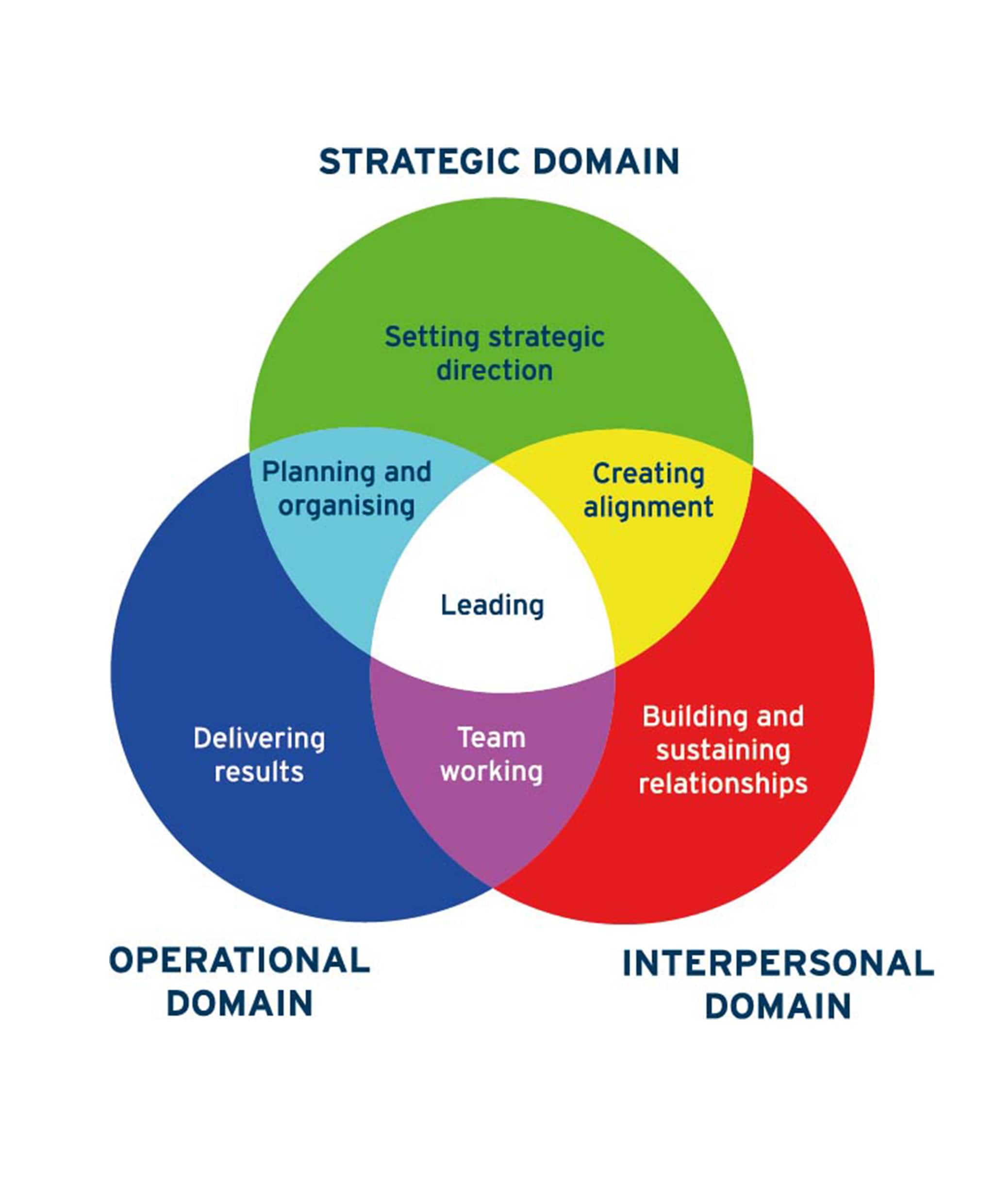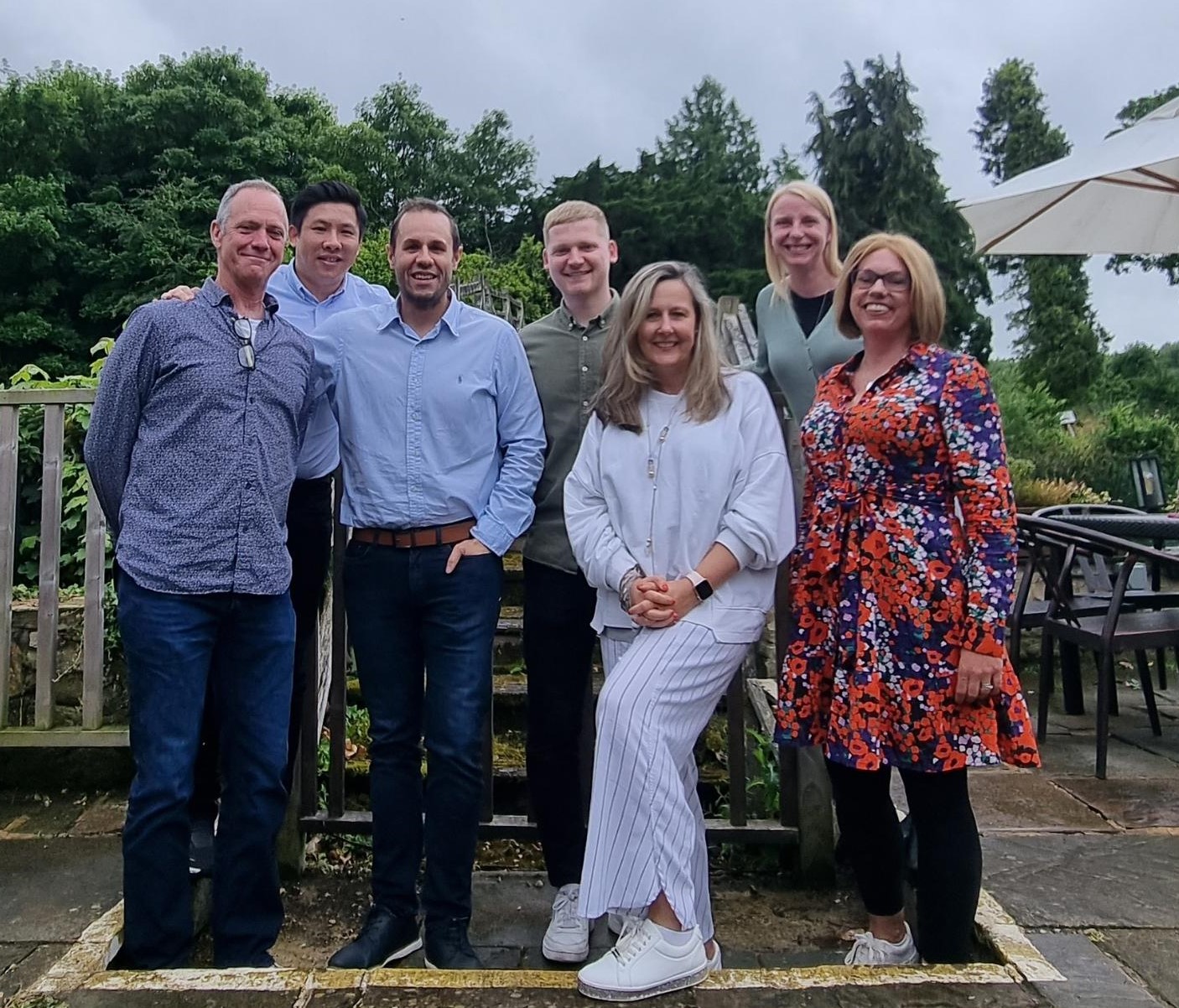Introduction
Good leadership makes a difference to organisations of all shapes and sizes: nations, corporations, charities, sports teams. We know this intuitively and believe it for good reason. There is ample evidence of the power of leadership in robust studies and it is celebrated in disparate forms from Nobel Prizes to Hollywood movies, from comic books to historical analyses. It captures our imaginations and we earnestly hope for its beneficial effects to touch many aspects of our lives. Yet its effects can also be maleficent and history is populated with at least as many despots as statesmen and women: at least as many villains as heroes.
Yet despite its prominence in our lives and imagination, most of us may be hard pressed to state simply what leadership comprises. We all have ideas about who leaders are and what they do; the characteristics we believe they need and the skills they need to deploy but these insights are often contradictory and fragmented. They cannot be said to guide actions in more than a few circumstances. The world of popular aphorisms poses conundrums: should leaders be resolute and unchanging, such as Margaret Thatcher or flexible and responsive such as Ban Ki Moon? Is leadership more effective when it is authoritarian or consensual, centralised or distributed?
Certainly the study of leadership through the 20th century demonstrates a shift in western nations from hierarchical leadership to distributed and consensual leadership. As the 20th century began, dominant ideas about both leadership and management were typified by the ideas of Frederick Winslow Taylor’s (1911) Scientific Management which preached that ability, and therefore control whether leadership or management, justifiably rested with a few people and that the vast majority of those working in organisations should comply with the instructions, plans and processes created by those with the ability to lead. As the 20th century closed and the 21st century began, Gayle Avery and colleagues (2004) were arguing that the new dominant approach to leadership was organic in which leadership was based on buy-in and mutual sense-making: the vision is owned and co-created by all. Pendleton and Furnham (2012) summed up this evolution in a power-shift model in which leadership moved from domination through negotiation to inspiration and co-creation.
Many organisations have their own leadership models which describe their preferred approach to leadership. The Boeing corporation, for example, has a management model, a leadership model and leadership attributes that cover a range of issues from financial objectives and performance, to stakeholders and values, all of which are taught in highly evolved programs at the Boeing Leadership Centre outside St Louis, Missouri in the USA. Their investment and commitment to leadership’s development is visible to all and all aspects of their work are of the highest standards and consistency. The facility itself is outstanding and the same can be said of their courses, the time commitment of their senior executives as teachers, their materials and their facilitators. It would be hard to imagine any organisation with a greater commitment to the development of leadership amongst its managers and professionals. The centre teaches expertly the Boeing approach to leadership, which is unique.
The study of the history of leadership ideas demonstrates that, while there are megatrends such as the increasing democratisation of leadership, there are few dominant ideas, let alone a core paradigm around which the current state of the subject revolves. Similarly, there are many attempts to describe leadership which mix levels confusingly: attributes are mixed with values, tasks with skills, strategies with behaviours and then all are blended into models which, unsurprisingly, neither cohere nor clarify.
In this chapter, we will describe the Primary Colours Model of Leadership (PCM; Pendleton and Furnham, 2012) which was developed with four aims in mind. First, to encapsulate a great deal of the evidence linking leadership to performance. Second, to describe the tasks of leadership in a simple and coherent model. Third, to make the model memorable and therefore make it possible to guide leaders’ behaviour day to day. Fourth, to create a frame of reference to which other leadership models might be compared so that the links, similarities and differences can be identified. If these aims could be achieved, then it would be possible to achieve a further aim: to assess leaders’ capabilities in the tasks described by the PCM and to compare assessments conducted against other frameworks by mapping the other leadership framework to the PCM.
The Primary Colours Model
The idea of primary colours is significant. We suggest that there are three domains in which leaders have to operate: the strategic, the operational and the interpersonal. Each has its own focus but the domains also overlap in a Venn diagram which shows the interrelationships between them:
- The focus of the strategic domain is the future and the direction the organisation needs to take on the journey to its preferred future state.
- The focus of the operational domain is the present and the actions required to produce the results on which the organisation depends.
- The focus of the interpersonal domain is the organisation’s stakeholders, how they are best motivated, sustained and involved on the journey.

Each domain is represented in the model as a primary colour of light. These primaries (red, green and blue), when added together, create complete white light which comprises all the colours in the spectrum. The primaries are elemental and can be blended to form new colours but unless all three primary colours are present, the spectrum of light is incomplete and the colour is not pure white. We thus mean to signify that leadership can only be complete when it comprises strategic, operational and interpersonal elements which are blended and balanced. If one element is missing or under-played, the leadership is not balanced nor is it complete.
The strategic domain
In the strategic domain sense has to be made of the context in which the organisation resides. The most straightforward element of the strategic domain is what we have called ‘Setting Strategic Direction’. The external environment can be understood in many different ways but a PEST analysis illustrates how this might be done: by understanding the Political, Economic, Social and Technical environment. Based on careful understanding of the external environment, forceful features may be identified that exercise a particularly powerful effect or demand on the organisation. These are the compelling influences to which an organisation must respond in order to be successful.
Consider the supermarkets and the changing landscape in which they have been working over the last decade. There is enough food to feed the current world population but it is not well distributed throughout the globe. The green lobby point out the undesirability of transporting food large distances and argue for local sourcing. Those in favour of genetic modification urge the rest of us to consider the pace at which the world’s population is growing and the limited supply of land to feed it. Opponents urge us to switch away from eating inefficient sources of protein (animals) to much more efficient and sustainable sources (vegetables and pulses). Competition forces prices and margins down. The internet increasingly has the capacity to turn suppliers who sell through the supermarkets into competitors who sell directly to the consumers. The key words seem now to be local sourcing, sustainability, efficiency, affordability, bricks and clicks. Making sense of this complex and changing environment takes place in the strategic domain. Having done so, a strategic response can be fashioned.
Determining the purpose for which the organisation exists is also part of setting strategic direction. Wal-Mart’s purpose has always been to make it possible for less well-off people to buy the same things as wealthier people. That is the idea around which the organisation was created. Just after the war, Sony set about working to a different purpose: to change for ever the world’s perceptions of Japanese goods being of poor quality. Looking back from the 21st Century, it is hard to believe that this was ever a problem. In the case of the UK’s National Health Service, purpose is complex and changing. It was set up after the war to treat all patients for all conditions without charge at the point of delivery. Now it is becoming increasingly clear that such a purpose cannot readily be served when medical inflation is greater than the growth of GDP but no new clarity of purpose has emerged and so the old one is served at increasing strain to the taxpayer, the staff and the patients.
Vision is also created in the strategic domain. Vision is a compelling view of the future and the place the organisation wants to occupy in that future. It may be derived deductively or creatively but it has to be powerful in its effect if it is to be worthy of the name ‘vision’. Few organisations have a really powerful vision: they seem to have become lost in strap lines and lip service. For many, a powerful vision is no more than a plaque on a wall or a marketing device, but for others it is their very life blood. For many years, the Johnson and Johnson Commitment (called the J & J Credo) was so important that their CEO made regular visits to their plants and offices worldwide to run ‘Credo challenge meetings’ in which anyone was allowed to challenge the extent to which the company was living and operating consistently with the credo. The credo was a mix of vision and values.
Other visions have been pithy statements of audacious goals. Few will forget the vision for NASA given to them by John F Kennedy at the start of the 1960s: to put a man on the moon and return him safely to earth by the end of the decade. A decade earlier, Boeing had given themselves a visionary task of becoming the dominant player in commercial aircraft and of bringing the world into the jet age.
The point about visions is that they paint pictures. They appeal to the imagination like the Chorus at the start of Shakespeare’s Henry 5th. They are seldom data rich or logical but aspirational and inspiring. They seldom involve numbers, since numbers are seldom inspiring although the drive to be Number One is sometimes deployed as a vision. William Van Dusen Wishard put it like this:
‘Vision is seeing what life could be like while dealing with life as it is. Vision deals with those deeper human intangibles that alone give ultimate purpose to life. In the end, vision must always deal with life’s qualities, not with its quantities’ (Van Dusen Wishard, 2000).
Mission is related to vision. The word derives from the Latin verb ‘to send’ and missionaries have always been sent with a clear purpose to achieve a goal. An organisation’s mission is its medium-term agenda. It is the focus for its activities over several years in support of its vision. Occasionally, these mission statements are simple, straightforward and aggressive, defining a common enemy. Crush Adidas motivated Nike in the 1960s. We will destroy Yamaha was the battle cry of Honda in the 1970s, and for Canon in the 1980s it was Beat Xerox.
Other organisations deal with the matter of purpose, vision or mission differently and very originally. For Harley Davidson, one executive famously defined the purpose of the organisation as to provide the opportunity for a 43 year old accountant to wear black leathers, drive through mid-western American towns and have people be afraid of him! Virgin Atlantic have at times stated that their purpose is to allow their customers to have fun at 37,000 feet. And Starbucks have defined their purpose as to provide a third place (after home and work). All these statements are located in the strategic domain and are part of setting strategic direction.
The organisation’s values also live in the strategic domain. They are the guiding principles and ethical standards that will help the organisation solve problems and navigate a sustained course in good times and bad. Cynics might argue that values are the indulgence of organisations going through easy times but they are best observed when the organisation is in difficulty.
The acid test of whether values matter to an organisation is to be found in the organisation’s reactions to tough challenges. The reaction of Nestle to concerns over the marketing of baby milk and the reaction of Johnson and Johnson to the contamination of its products were bold, values-based responses. A cynical counter argument can be made arguing that these reactions were really commercially driven but the leadership challenges implicit in dealing with multi-stakeholder organisations are considerable. No undiluted focus on any group of stakeholders will last in the longer-term. Even a belief that the customer is king is simplistic. Leaders have to recognise that any significant group of stakeholders (customers, shareholders, employees or the communities in which the businesses are located) can do harm to an organisation if their interests are not served. An organisation’s values have to reflect these realities and be credible to all if they are to survive serious challenge.
Indeed, values and purpose ideally come together. Those organisations who for years have placed the creation of shareholder value at their core have more recently had to turn to efforts under the heading of corporate social responsibility (CSR) to create a countervailing force to the relentless drive to increase margins. Some have done this for entirely laudable reasons. Others have been driven by more cynical motives: we may screw our customers and staff but we’ll do something nice so that our PR people can have a good story to tell about us. Either way, companies involved in CSR have carried out worthy projects that do some good in areas unrelated to their main work.
More recently, Michael Porter and Mark Kramer have argued for the creation of shared value, rather than just shareholder value (Porter and Kramer, 2011). The idea here is that 21st century businesses are beginning to move in a different direction: towards more ethical practice and sustainability. They are seeking a business model that does actual good to all its stakeholders in the longer term. This is the creation of truly shared value rather than favouring one stakeholder group over the others. It is a choice about a new way of thinking and operating in all aspects of the business and is reminiscent of the distinction between dieting (episodic and temporary) and a genuine and permanent lifestyle change. This debate is a the heart of Setting Strategic Direction.
Naturally, the strategic domain is also where strategy itself is decided. Strategy is, as defined by the Oxford dictionary, a plan designed to achieve a particular long-term aim. The strategic domain is where a leader or leaders prepare and plan for the future, define its journey and set its course. In the days of the cattle drives, a simple strategy might have been to keep the herd moving west, thus defining north and south as irrelevant and east as counter-productive. In organisations, strategies integrate the organisation’s various functions and divisions, stretch over longer periods of time and identify the key priorities that enable important choices to be made including what not to do.
Once set, the purpose, vision, mission and values become the rallying cry of the organisation, and the strategy its high level plan. They give its existence both a meaning and a mandate. They become the broad aims to which other people can subscribe: the reason to join, stay with or leave an organisation. The process of building commitment to the organisation’s aims is what we have called ‘Creating Alignment’. Alignment is the shared basis of engagement with the organisation: literally, the act of lining up together behind a common purpose or goal. It is based on rational communication and logical persuasion on the one hand, and on passion on the other: a matter of hearts and minds. It is related to inspiration which similarly depends on both the rational and the emotional. Rationality specifies a direction and a rationale for following it but emotion motivates people to follow the course described. Rationality alone can fascinate but will not inspire or align without the power of feeling: the power of the heart. It is aided by imagination and excitement about what could be. Creating interpersonal alignment is a matter of influence and persuasion. Other forms of alignment are more technical such as the alignment of investment, systems and processes with purpose and strategy, but alignment is always crucial.
When the Guardian newspaper in the UK wrote in their business section about Nike in 2003 they said this: ‘Nike is the real deal. These guys are jocks. They are the happiest in the locker room. Phil Knight is driven by a love of sport but not necessarily a love of business. Anyone who has visited the Nike corporate campus knows immediately – these guys are real jocks!’ They were describing an organisation that had created alignment to release and realize the power of their collective efforts. They had everyone facing the same way and working towards their goal.
As strategy is broken down into its linear steps, and timelines are created around its tasks, it becomes the first element of Planning and Organising. Plans and organisation keep the organisation on track. They embody the focus around which the work is arranged and help everyone understand the size and nature of the tasks that have to be achieved. Planning is the first element of performance management as plans become objectives, targets and tasks. Organisation is its twin: ensuring that structures, processes and procedures are created that support the achievement of the plan. There is no such thing as good organisation in its own right: the quality of organisation is determined entirely by its appropriateness for the plan it serves.
The operational domain
If the strategic domain represents the head, the operational domain represents the ‘hands’ and legs of an organisation. Its goal is to achieve results. Indeed, it could be argued that the goal of the entire organisation is to achieve sustainable results, but not just any results: those that serve and advance the organisation’s purpose. Planning and Organising belong as much to the operational domain as the strategic domain. The higher-level the plans, the more they are a part of the strategic domain. The more plans are broken down into objectives and tasks, and as timescales shorten, the more they reside in the operational domain. There is no strict dividing line between the two, merely a matter of degree as two colours in the spectrum cannot be strictly divided; yet there is a point in the spectrum where the colour is clearly blue and another clearly green.
Delivering Results represents the ability to drive work through to completion. It is hard edged and determined. Its skills are tempered in steel and its methods robust. It is a challenging and forceful aspect of leadership that asserts, drives, completes. It also acknowledges that motivation has to be sustained and so it may celebrate success and deal with performance shortfalls, but it is not soft. It is the most transactional part of leadership and is embodied in the performance management process.
Team Working acknowledges that organisational life is seldom made up of solitary contributions. It is at the point of overlap between the operational and interpersonal domains. Team working holds out the possibility of synergy: that the team may become so adept at working together that the whole becomes greater than the sum of the parts and that the collective effort can achieve standards of performance greater than the most effective individual in the team . Leaders who value team working have first to keep their own egos under control and have to model the cooperation they want to see in others. Many great leaders have learned this through team sports in their formative years.
The emphasis on team working is twofold: team and work. Team membership carries considerable advantages as Michael West and colleagues have demonstrated at Aston University (Borrill and West 2002). They have been able to show that there are significant gains in employee satisfaction, innovation and even in the mental health of team members to be gained from effective team working. But the emphasis is clearly on getting work done and realising significant gains in productivity.
The interpersonal domain
The interpersonal domain encompasses the ‘heart’ of an organisation: the way it feels to work in an organisation is its climate and it is set by the actions of the leaders. When Creating Alignment, the effective leadership team will appeal to hearts and minds creating both rational and emotional commitment to the organisation and its journey. This is why creating alignment sits at the intersection of the strategic (head) and interpersonal (heart) domains.
Team Working is also at a point of intersection between domains: the operational (hands) and interpersonal (heart) domains. The matter of discretionary effort illustrates why. Discretionary effort is the effort that does not have to be given, but is given because the individual chooses to do so. Whenever we lecture about this in classes of executives at the Saïd Business School at Oxford University or elsewhere, we ask executives to imagine that the minimum acceptable level of work is 100, and then ask how much more could someone put in if they were totally committed? The answer on this hypothetical scale usually varies between 150 and 300. It is through creating alignment (engagement) and team working that the commitment builds and discretionary effort increases. Napoleon considered one motivated soldier was worth three unmotivated soldiers (hence 300 on our scale).
Building and Sustaining Relationships is the epitome of the interpersonal domain. Leadership is as much to do with who we are as what we do. It is hard to trust an organisation or a cause, but we may trust people when we get to know them. Relationships may be with colleagues, customers, suppliers, shareholders or the community in which the organisation resides. Relationships with all stakeholders need to be built and sustained over time. They will work best if they are also perfused with the same values, standards and behaviours. Indeed, shared values may even be a condition of entry into an organisation or team.
Leading
Where all three domains in the primary colours model overlap, they form a central zone where the essence of leadership can truly be said to reside. The Primary Colours Model is all about leadership and leadership in general is the fulcrum that sits at the core of the organisation and around which the organisation turns. At the core of leadership is the act we have dubbed leading. To follow the anthropomorphic analogy – if the strategic domain is the head, the operational domain is the hands and feet and the interpersonal domain is the heart, then leading is the nervous system: it senses, provides balance and coordinates the other functions.
Leading balances the other leadership contributions in response to the demands of the situation. As the orchestral conductor may encourage the strings to play louder in some passages and the woodwind to stop playing for a while, so leading may call for a great deal more short term results delivery at one time, and rather more investment in developing people at other times; it may push a decision through rapidly to facilitate action at one time and insist on taking time to build commitment at another; it may call for more thorough planning at one time and greater strategic clarity at another. This is a matter of judgment and as these various phases are implemented, leading may pass the baton to different leaders to take advantage of their respective leadership strengths.
We propose that, in this central zone are five enablers of leadership which facilitate all the other activities. These five enablers of leadership are described in five verbs:
- Inspire
- Focus
- Enable
- Reinforce
- Learn
Sadly, it is hard for any individual person to be equally good at all these enablers. The reasons are essentially psychological, and Gallup, in their 2008 review of more than 20,000 interviews with senior leaders, more than a million work teams, 50 years of polls about the world’s most admired leaders and a study of more than 10,000 followers concluded that the most effective leaders surround themselves with the right people and ‘while the best leaders are not well rounded, the best teams are’(Rath & Conchie, 2009)
Four propositions
In the new theory of leadership for the 21st century, our first proposition is that the Primary Colours Model describes the territory in which leaders have to operate. Our second contention is equally important: that it is extremely hard for individuals to be complete leaders.
In the case of the three domains in general: some people are good at strategy and at discerning the big picture. They tend to be massively bright and expansive in their thinking. Some are good at operations. This calls for a different mind-set – one that is concerned with practicalities, knows what to do, when and how much. They tend to be sequential thinkers and highly focused and determined. Some are good at dealing with people – they know instinctively what matters, how to treat people, and how to put themselves in other peoples’ shoes. They have high levels of interpersonal insight: awareness and sensitivity mixed with good judgment and social skills.
It is extremely rare to find leaders who are outstanding in all three domains, and with the seven tasks defined in the PCM, the same holds true. Pendleton and Furnham (2012) have set out reasons why this may be true but it bears repeating here that this chapter’s authors have assessed many hundreds of leaders and have never found one who is outstanding in all aspects of leadership. The ubiquity of this suggests it is not a sampling error but a feature of the leadership population that was also noticed by Gallup in their contention that the best leaders are not well rounded but the best teams are.
Our third proposition is that personality interacts with experience to create natural strengths, potential strengths, fragile strengths and resistant limitations. Natural strengths are created when experience harnesses and works consistently with personality to create skills that are easy both to learn and to sustain. Potential strengths are actually limitations but those which can easily be overcome by development. This happens when a personality attribute such as conscientiousness has not yet been mixed with the learning that enables planning and organising. It is analogous to a poker or bridge player who has been dealt a great hand of cards but has not yet learned how to play the hand well. This is low hanging development fruit which makes great sense to develop.
Fragile strengths are created when skills have been learned by great effort and determination over long periods of time but which work counter to the learner’s personality. A learner may have learned over many years to plan and organise well but if that person is also low in conscientiousness and high in open mindedness then he or she is low in self-discipline and highly distractible. The skill of planning and organising is therefore fragile and requires constant focus and concentration in order for it to work well. It is constantly vulnerable to deterioration. It is fragile.
In the case of resistant limitations, the individual has neither learned the skills they need nor do they have a helpful set of personality characteristics to make the learning easy. It makes little sense to invest time and effort trying to develop these skills as the yield in terms of benefit and improved performance is likely to be low and the development journey long and frustrating.
This conclusion leads to our fourth proposition: that it makes better sense to deal with resistant limitations by working with colleagues whose natural strengths are in the area where one’s own resistant limitations lie. This is the proposition that argues that complete leadership is most likely to be achieved by working with teams made up of complementary differences. This is not easy but more likely to lead to success than struggling to become capable in an aspect of leadership which, at best, will be slow to develop, and, at worst, may lead to the deterioration of other strengths that have already been acquired.
Consider the heptathlete. Jessica Ennis (now Ennis-Hill) won the Gold Medal at the Olympic games in London 2012 but while she is a world class runner and jumper, she is much less capable in the javelin. If she were to build her upper body to throw the javelin more powerfully, she would make it harder for herself in the high jump.
Mind-sets, enduring responsibilities and inner states
The mind-set associated with success in the strategic domain tends to be qualitatively different from that in the operational and interpersonal domains. Strategists approach a new problem by backing away from the detail to see a bigger, more encompassing picture of the issue and take conceptual leaps into the future to consider how it might look. Operators do the reverse: they zoom in on detail to focus and move forwards in systematic, incremental steps. The strategist works with pictures and scenarios, the operator with sequences and processes. Both focus on the tasks in hand whereas the interpersonal mind-set focuses on that sub-set of issues that relate to the people and is frequently guided by emotional intelligence and personal values. These differences tend to be fundamental: built in to an individual and shaped over years. They are hard to change and hence we recommend working with colleagues whose differences might be complementary.
Yet it is not possible to shake off responsibility for those aspects of leadership in which one is less than capable. A leader may find it hard to plan and organise well but cannot get away with not being planned and organised: it is not a license to be chaotic. Rather, there are several alternative responses that make sense even when that leader is aiming to work with a colleague who will bring the skills required in planning and organising rather than seek personally to develop it.
First, there is a need to acknowledge the personal deficiency rather than either deny or minimise it. Second, there is a need to value the capability, in this case recognising the importance of planning and organising. Too often, leaders with a skills deficit attempt to rationalise it away by arguing that other capabilities are far more important. Third, we need to find the colleague who is capable where we are not and give them a clear mandate to lead in that area. Finally, we have to defer to that colleague in planning and organising. This may mean complying with their leadership in certain aspects of the work.
Yet it is possible that certain inner states can facilitate activity in these aspects of leadership. Elsewhere in this book, Peter Gruenewald and David Pendleton have described the inner states that facilitate the leadership tasks and this holds out the possibility that such states might be cultivated when the appropriate task needs to be addressed. For example, they argue, calmness facilitates planning and organising whereas enthusiasm facilitates creating alignment. Clearly, if such states can be cultivated then we hold out the possibility that these capabilities can be enhanced, especially if such capabilities are potential strengths. If they are resistant limitations, such an approach also holds out the possibility that the resistance might be reduced.
References
Avery, G. (2004). Understanding Leadership. London: Sage Publications.
Borril, C. and West, M.A. (2002). Team working and effectiveness in health care: findings from the healthcare team effectiveness project. Birmingham: Aston Centre for Health Service Organisation Research.
Pendleton, D. and Furnham, A. (2012). Leadership: All you need to know. Basinstoke: Palgrave Macmillan.
Porter, M. and Kramer, M. (2011). Creating Shared Value. Harvard Business Review, January-February 2011.
Rath, T. and Conchie, B. (2009). Strengths Based Leadership. Washington: Gallup Press.
Taylor, F. (1911) Principles of Scientific Management. New York: Harper & Brothers.
Van Dusen Wishard, W. (2000). Between Two Ages: The 21st Century and the Crisis of Meaning. Indiana: Xlibris.





















